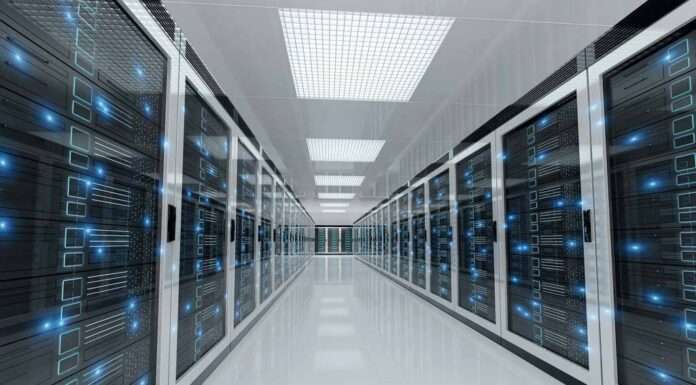Unpacking the True Environmental Cost of AI’s Expansion
As artificial intelligence (AI) weaves itself into the fabric of global technology, its environmental toll has come under increasing scrutiny. Behind the veil of “green” initiatives touted by Big Tech, there lies a complex landscape of substantial energy consumption, significant CO2 emissions, and controversial water usage. This article delves deep into recent research and expert analyses to examine whether AI’s rapid expansion can align with genuine sustainable practices.
The Growing Carbon Footprint of Data Centers
In 2024, global data centers were recorded to produce a staggering 140.7 megatons of CO2, according to a sustainability report by the University of San Francisco [1]. These figures are alarming as they highlight an urgent need for about 6.4 gigatons of trees to neutralize these emissions. Parallelly, these centers consumed 256.6 terawatt-hours of energy—enough to power approximately 24 million US households. This soaring demand for electricity is poised to match the energy requirements of 28 million households by 2028 solely due to AI advancements [4].
Expert Insight: According to MIT researchers, this increase in energy use is not just a direct consequence but also includes broader systemic environmental costs [2]. Elsa Olivetti’s paper emphasizes the lifecycle impacts and embodied carbon within AI infrastructure that often remain unaccounted for in conventional reporting.
The Reality Behind Renewable Energy Claims
While companies like Meta have reportedly cut down operational emissions by 94% through renewable energy, investigative reports from Business Insider expose a critical gap in these claims [5]. Many data centers still rely on fossil fuels during peak demands. Renewable Energy Certificates (RECs) and Power Purchase Agreements (PPAs) frequently lack true additionality—meaning they do not contribute to new renewable energy projects but rather trade credits from existing projects.
Original Insights: The reliance on market-based accounting allows firms to claim carbon neutrality without real-time proof of using renewable sources continually, thus presenting an inflated image of their green initiatives.
Water Scarcity and Local Community Impact
A quite unsettling finding is that about 40% of US data centers are situated in regions with significant water scarcity [5]. These facilities use millions of gallons daily for cooling purposes, exacerbating local water shortages. Reports from Food & Water Watch reveal how such infrastructure expansions are disproportionately affecting Black, Brown, and low-income communities in areas like Arizona and Tennessee [4].
Local Voices: Community members highlight their struggles with rising utility bills and reduced water availability directly attributed to nearby AI-driven facilities.
Technological Innovations Aimed at Reducing Environmental Strain
In response to these challenges, technological developments offer a silver lining. NVIDIA’s H100 GPUs with enhanced energy efficiency and Beeyon’s Papillon solution are at the forefront of cutting down energy use by up to 30% [3]. Data centers relocating to colder climates also illustrate proactive measures towards reducing cooling water needs.
However, as experts argue, while these innovations are steps in the right direction, they might not suffice alone without more systemic approaches like computing sobriety, demand caps on resource use, or strategic siting near low-impact resources.
KEY FIGURES
- In 2024, global data centers produced 140.7 megatons of CO2, requiring 6.4 gigatons of trees to absorb it, and consumed 256.6 terawatt-hours of energy, enough for 24 million US households[1].
- By 2028, US AI-related electricity demand may equal that of 28 million households[4].
- US data centers could soon consume more electricity than Poland’s entire consumption (population 36.6 million)[5].
- AI-related air pollution and data center operation cause estimated public health costs between $5.7 billion and $9.2 billion annually[5].
- 40% of US data centers are located in areas with high water scarcity, consuming up to several million gallons of water daily per large data center[5].
- Meta reduced operational emissions by 94% since 2017 by powering data centers with 100% renewable energy[3].
RECENT NEWS
- (2025-06-18) Business Insider reports US data centers nearly quadrupled from 311 permits in 2010 to 1,240 by end of 2024, with massive impacts on power, water, pollution, and local communities[5].
- (2025-04-09) Food & Water Watch highlights AI-driven electricity demand leads to increased pollution disproportionately impacting Black, Brown, and low-income communities in Arizona and Tennessee, with infrastructure expansion raising utility bills for regular households[4].
- (2025-03-06) University of San Francisco sustainability blog details the enormous environmental footprint of data centers, emphasizing accelerating energy use and CO2 emissions[1].
STUDIES AND REPORTS
- MIT 2024 paper led by Elsa Olivetti: Generative AI significantly increases electricity and water demand in data centers, with broader systemic environmental consequences beyond direct energy consumption. Highlights the need for considering embodied carbon and lifecycle impacts of AI infrastructure[2].
- Solar Impulse Foundation 2025 report promotes solutions like renewable-powered data centers, energy-efficient GPUs (e.g., NVIDIA H100), and management platforms to reduce AI’s carbon footprint by up to 30%[3].
- Business Insider’s 2025 investigative series reveals that despite “green” claims, many data centers rely on fossil fuels during peak demand, and renewable energy certificates (RECs) and power purchase agreements (PPAs) often lack additionality or 24/7 clean energy matching, questioning the credibility of carbon neutrality claims[5].
TECHNOLOGICAL DEVELOPMENTS
- NVIDIA H100 GPUs offer 67% greater memory bandwidth and transformer engine acceleration, enabling more energy-efficient AI training[3].
- Beeyon’s Papillon solution identifies energy-saving actions on servers, cutting capital costs and reducing energy consumption by up to 30%[3].
- Heex Technologies’ Smart Data Management transitions organizations from Big Data to Smart Data, optimizing data processing efficiency and reducing energy use by 30%[3].
- Some data centers relocate to colder climates to reduce cooling water use and improve Power Usage Effectiveness (PUE)[3].
MAIN SOURCES
- https://usfblogs.usfca.edu/sustainability/2025/03/06/the-environmental-impact-of-data-centers-and-artificial-intelligence/ — Detailed 2024 data on data center emissions, energy, and scale.
- https://news.mit.edu/2025/explained-generative-ai-environmental-impact-0117 — MIT expert analysis on generative AI’s systemic environmental impacts and lifecycle carbon.
- https://solarimpulse.com/news/ai-data-centres-and-their-expanding-impact-on-the-environment — Solutions for reducing AI’s carbon and water footprint, including renewable energy and hardware advances.
- https://www.foodandwaterwatch.org/2025/04/09/artificial-intelligence-water-climate/ — Environmental justice perspective on AI’s impact on water, pollution, and communities.
- https://www.businessinsider.com/ai-data-center-development-true-cost-environmental-impact-2025-6 — Investigative reporting on data center expansion, resource use, and the gap between green claims and local impacts.
—
Synthesis: While Big Tech promotes “green” AI initiatives mainly through renewable energy purchases and efficiency improvements, multiple reliable sources and recent investigations reveal that these claims often fall short against the reality of soaring electricity and water demand in data centers. The rapid expansion of data centers, often located in water-stressed regions, leads to significant CO2 emissions, heavy water withdrawals for cooling, and increased reliance on fossil fuels during peak loads. Renewable energy certifications and PPAs frequently lack real additionality or 24/7 clean energy matching, undermining carbon neutrality statements. Health and environmental justice impacts disproportionately burden marginalized communities near fossil-fueled power plants supplying these data centers. Technological advances such as energy-efficient GPUs and smarter data management offer partial mitigation, but systemic approaches including compute sobriety, demand caps, and strategic siting near firm low-impact resources are needed to align AI growth with genuine sustainability. Transparent, verifiable metrics that incorporate lifecycle emissions, grid emissions hourly tracking, water use, and local environmental outcomes are critical to closing the gap between Big Tech’s green marketing and actual environmental impacts.
Other references:
usfblogs.usfca.edu – The Environmental Impact of Data Centers and Artificial Intelligence
news.mit.edu – Explained: Generative AI’s environmental impact | MIT News
solarimpulse.com – AI, Data Centres, and Their Expanding Impact on the Environment
foodandwaterwatch.org – Artificial Intelligence: Big Tech’s Big Threat to Our Water and Climate
businessinsider.com – The True Cost of Data Centers – Business Insider
technologyreview.com – Source
unep.org – Source
npr.org – Source
ainowinstitute.org – Source
energy.gov – Source
e360.yale.edu – Source
mitsloan.mit.edu – Source
green-blog.org – Source
dailyclimate.org – Source
nytimes.com – Source
ft.com – Source
bloomberg.com – Source
datacenterdynamics.com – Source
news.vt.edu – Source



